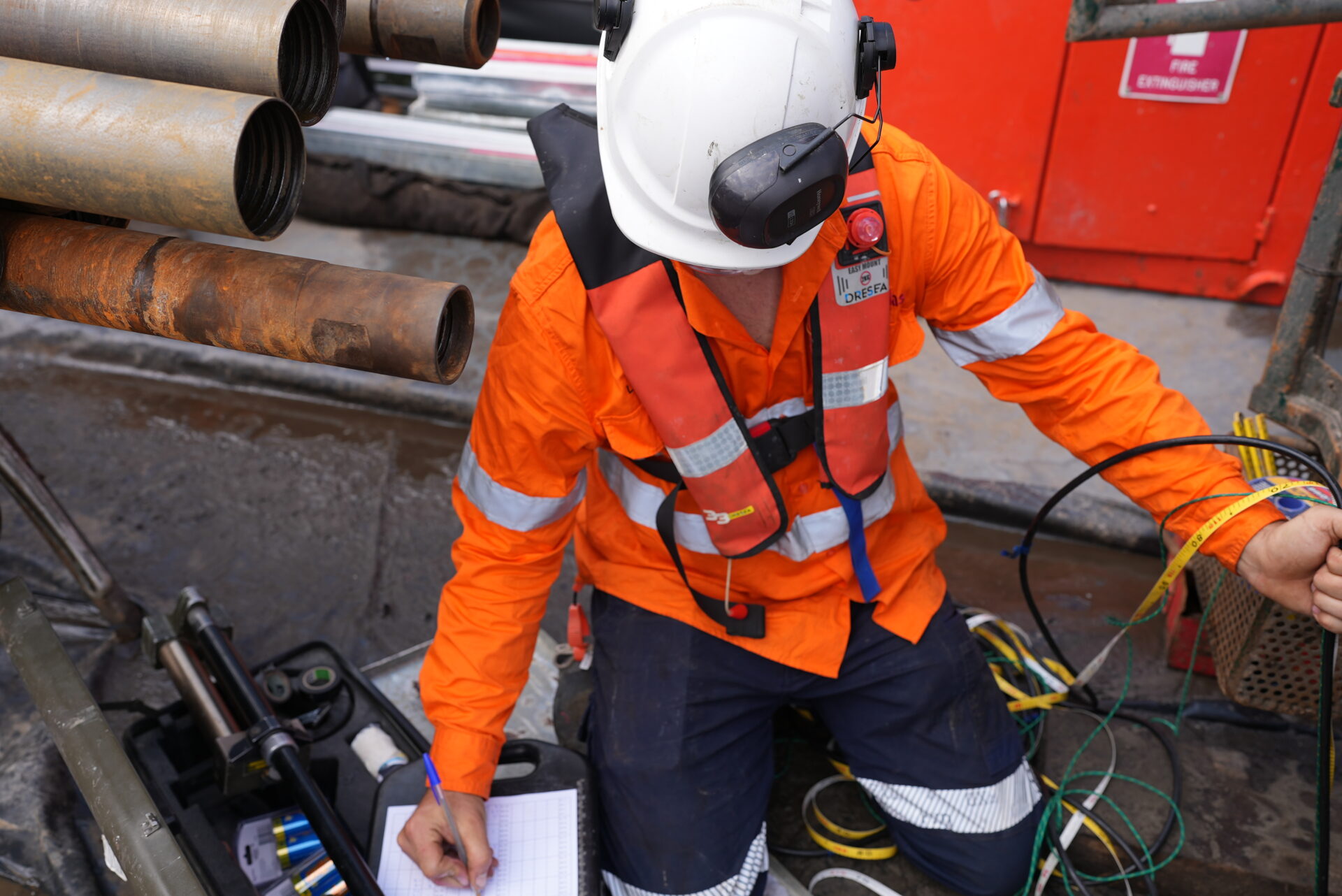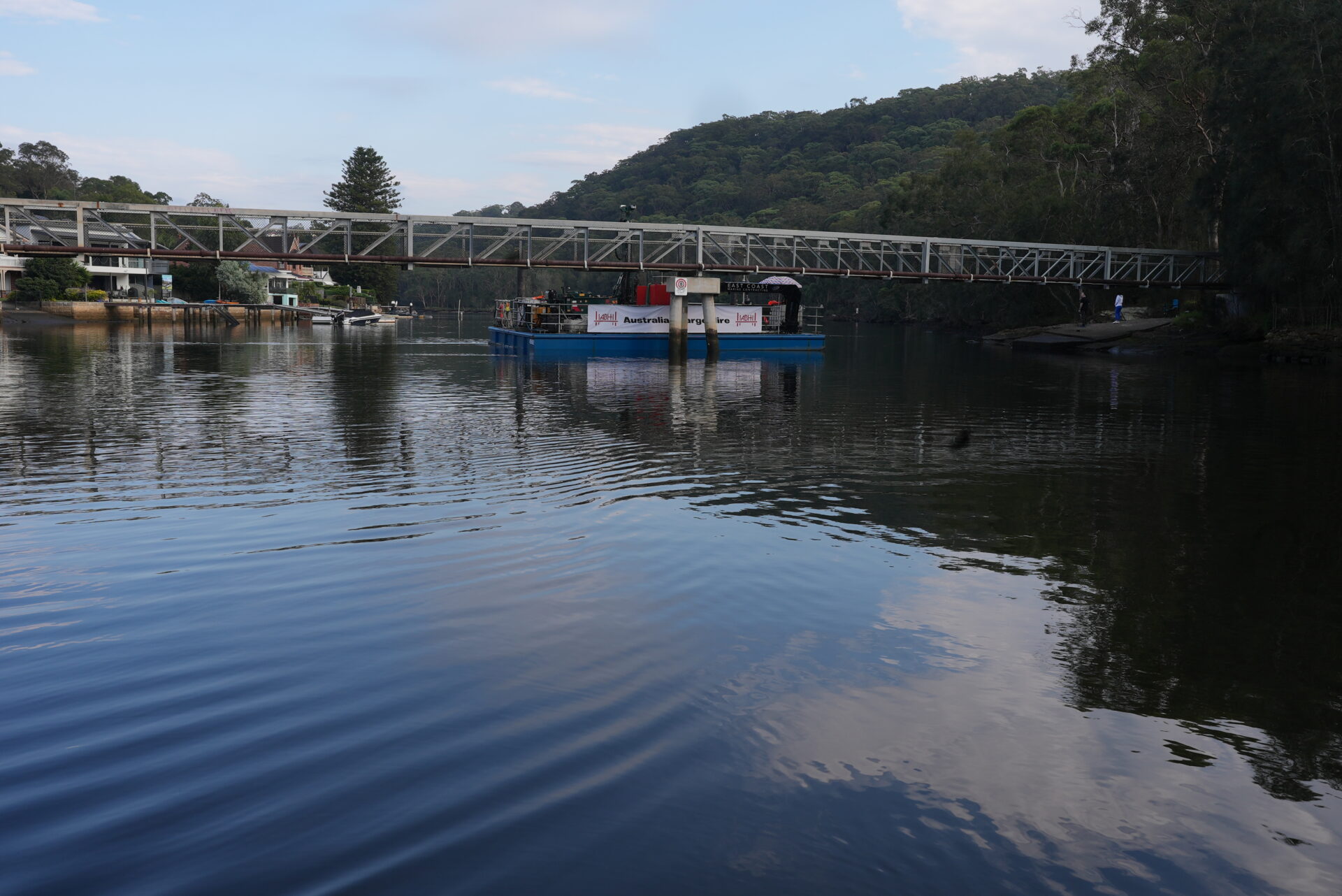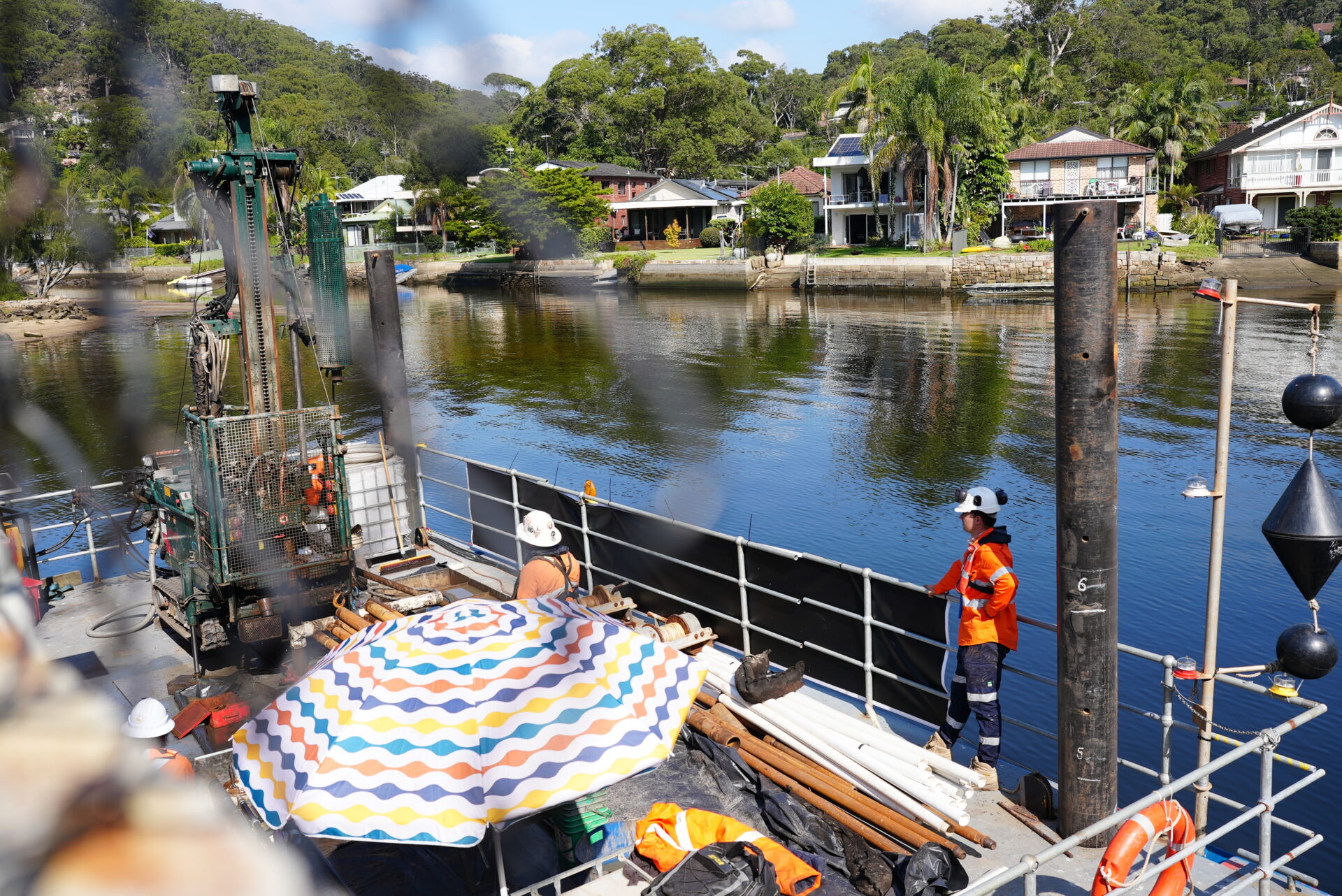Douglas Partners was recently engaged to conduct, a comprehensive investigation of a pedestrian bridge in the Sutherland Shire to evaluate the viability of reusing the bridge’s existing foundations to support a proposed replacement bridge deck.
This article outlines the methodologies and technical processes employed in the geotechnical and geophysical investigations, emphasizing the rigour and precision essential to ensuring the project’s safety, cost-efficiency, and compliance with regulatory standards.
Project Overview
A critical aspect of this project involves assessing whether the current foundations can support a new bridge deck structure, thereby potentially reducing the financial and environmental costs associated with constructing new foundations.
Geotechnical Investigation Process
The initial phase of the investigation focused on the geotechnical assessment of the ground profile through the drilling of boreholes near each pile group. The process involved:
- Setup challenges: Conducting operations near or on water required meticulous planning. Equipment setup, both on and offshore, needed to ensure rig stability and personnel and public safety within a dynamic riverine environment, since the bridge needed to remain open and accessible to the public during the investigation works. Special considerations included tidal fluctuations, current strength, riverbank stability and access limitations.
- Soil Profile Assessment: Boreholes were drilled using solid flight auger and rotary methods through the soil profile, with Standard Penetration Tests conducted at regular depth intervals for logging, sampling and assessment of the soils’ strength and stiffness.
- Rock Profile Assessment: Upon refusal on rock, the boreholes were extended into the rock for sampling, logging and evaluation of rock strength and stiffness.

Geophysical Investigation Techniques
To complement the geotechnical data, two geophysical testing methods were employed to indirectly assess the length of the existing bridge piles:
- Sonic Integrity Testing (SIT): a low-strain technique that is typically used for checking the structural integrity or continuity of a pile shaft. The method of SIT used involves imparting a relatively small amount of energy to the pile via a hand-held hammer, inducing a compressive stress (or ‘shock’) wave that travels down the pile shaft as a wave front and is reflected back towards the pile head, either wholly or in part, by a change of impedance within the pile. The sensor records the reflected stress wave. The velocity of the wave front is determined by the mechanical properties of the pile material. The time lapse between the hammer impact and arrival of the returning reflected wave from the pile toe or other interface is then used to assess the approximate pile length, in light of the ground profile revealed by the nearest borehole.
- Downhole Magnetic Gradiometer (DMG): Following the drilling of the boreholes, a fluxgate down-hole analogue probe was lowered into the cased boreholes to measure the vertical magnetic gradient in each borehole. Measurements were recorded at frequent regular intervals down each borehole, and the depth of steel reinforcement in the nearest pile was inferred to correspond with a higher density of measurements.


Data Analysis
Following data collection, an exhaustive analysis was conducted to develop a comprehensive geotechnical model. This model is vital for assessing whether the existing foundations are robust enough to support a new bridge deck structure.
The results of geophysical methods employed were then analysed to assess the likely length of the existing piles.
The assessed pile lengths will then be compared to the geotechnical model developed in order to carry out an assessment of the geotechnical capacity of each pile group, in an iterative process involving Council’s structural engineer, who will provide the relevant bridge deck loadings.
Navigating Challenges for Cost Efficiency and Safety
The possibility of reusing existing foundations presents a potential for significant cost savings by Council and by extension, the community. However, this is contingent on a detailed and accurate assessment of the foundations’ capacity to meet future structural demands safely. Our investigation aims not only to support infrastructure safety but also to optimize financial outlays, demonstrating our commitment to delivering high-quality, cost-effective solutions for Sutherland Shire Council.

